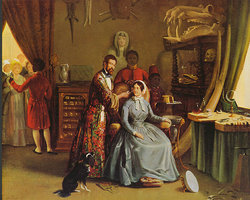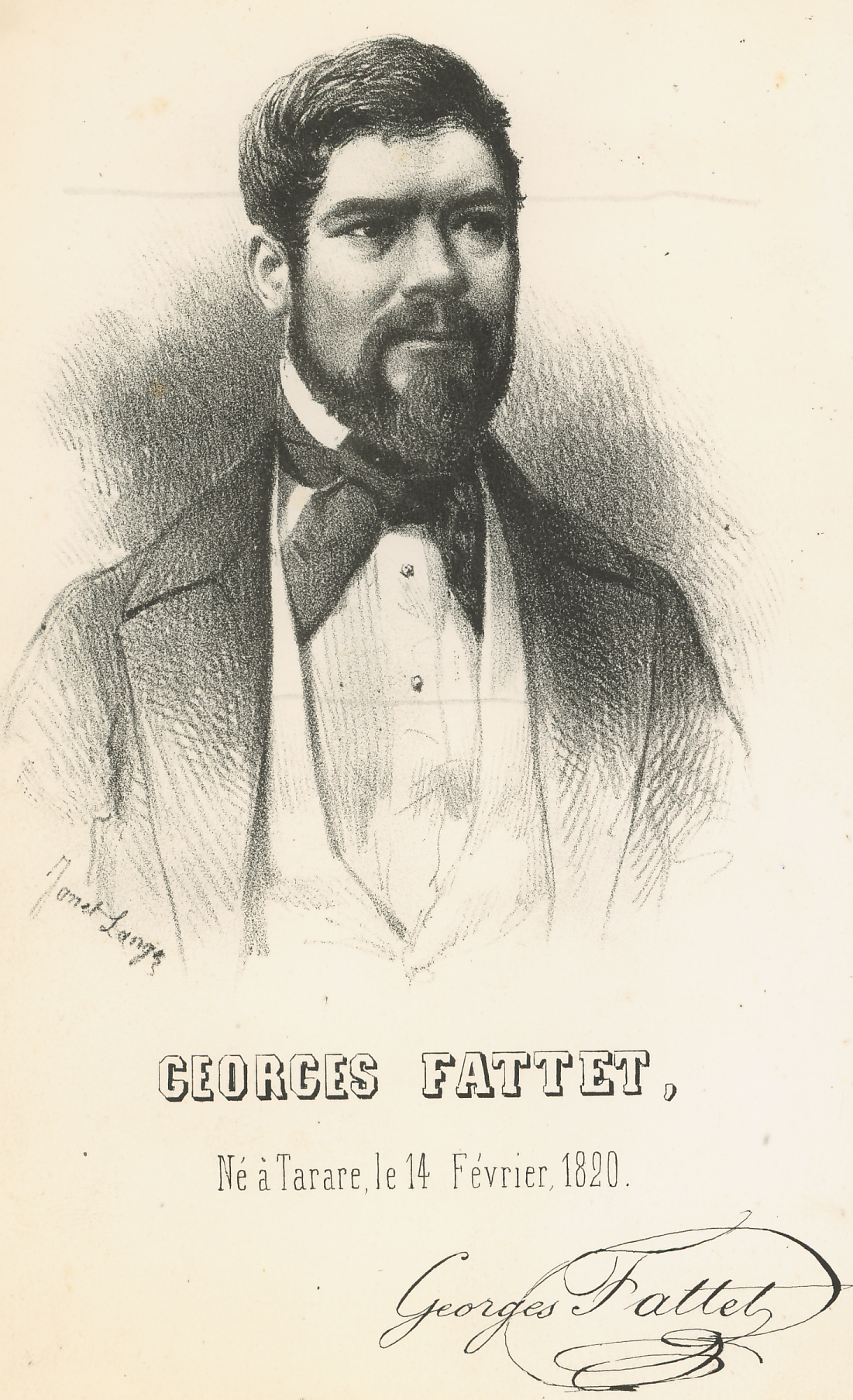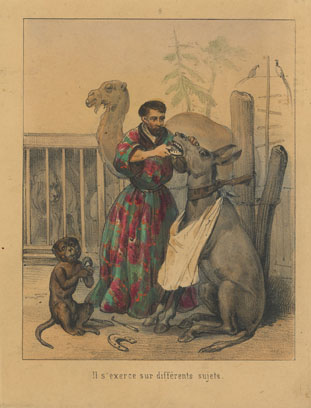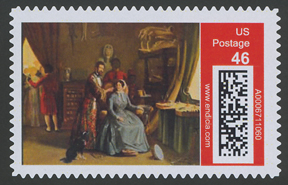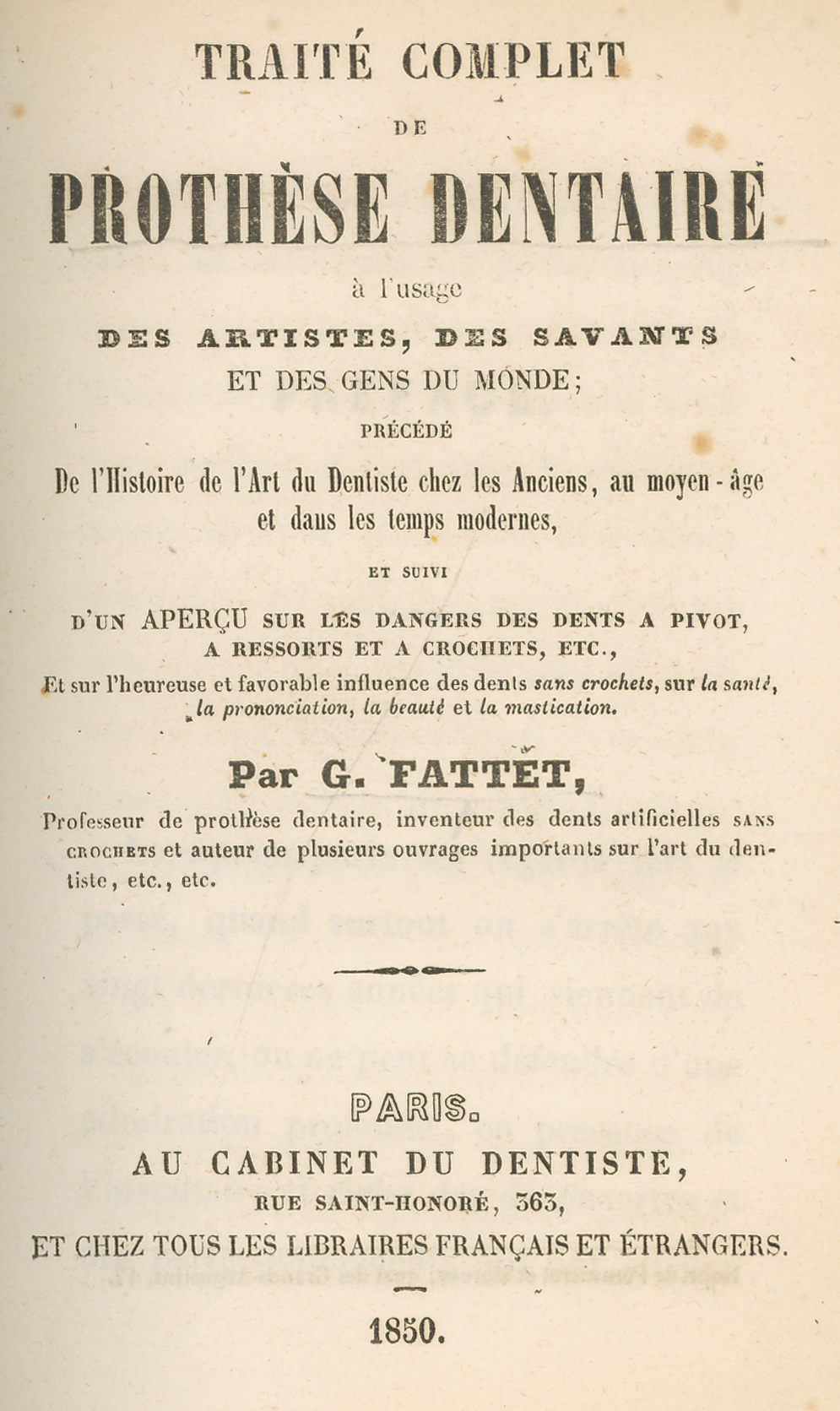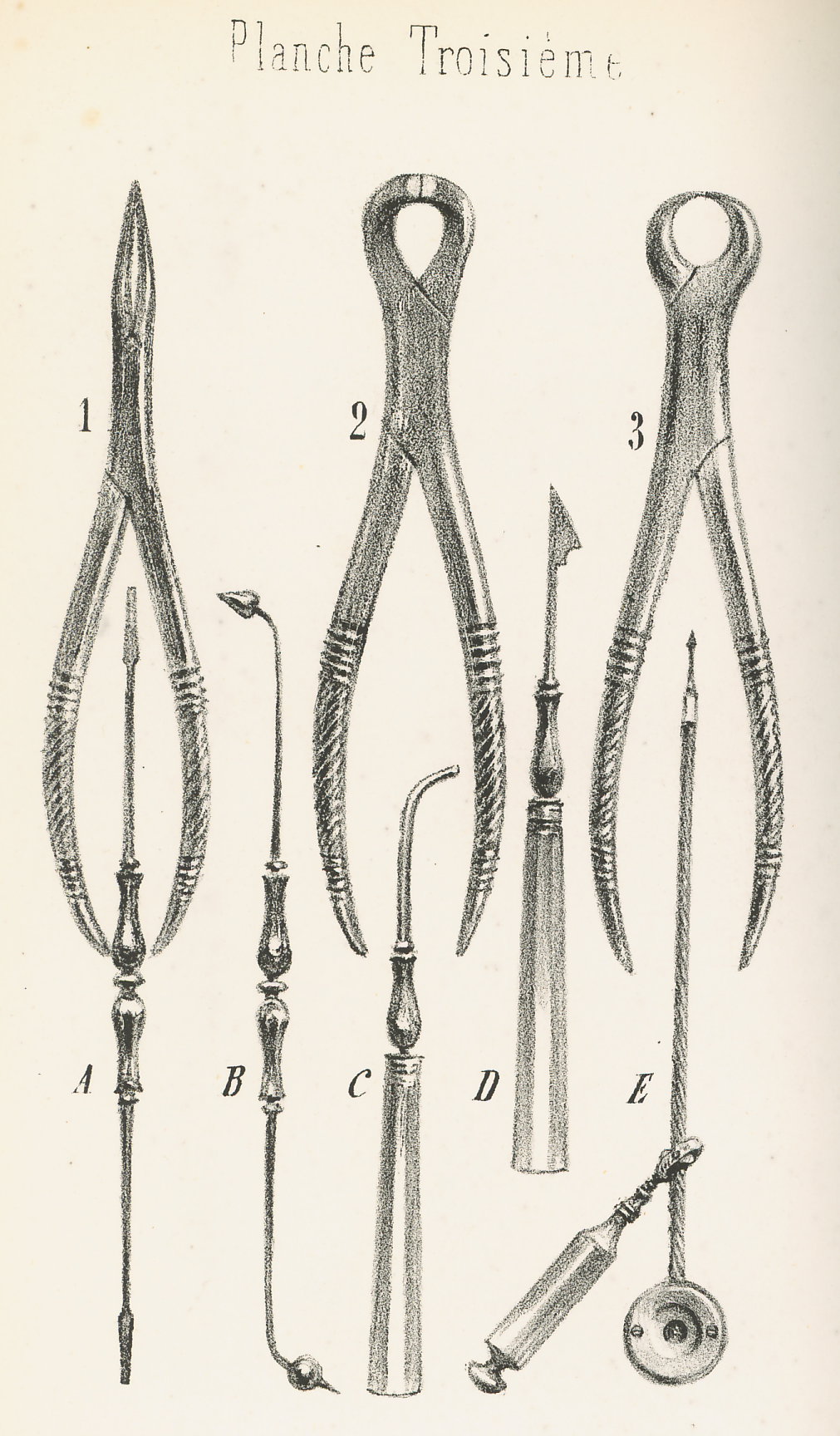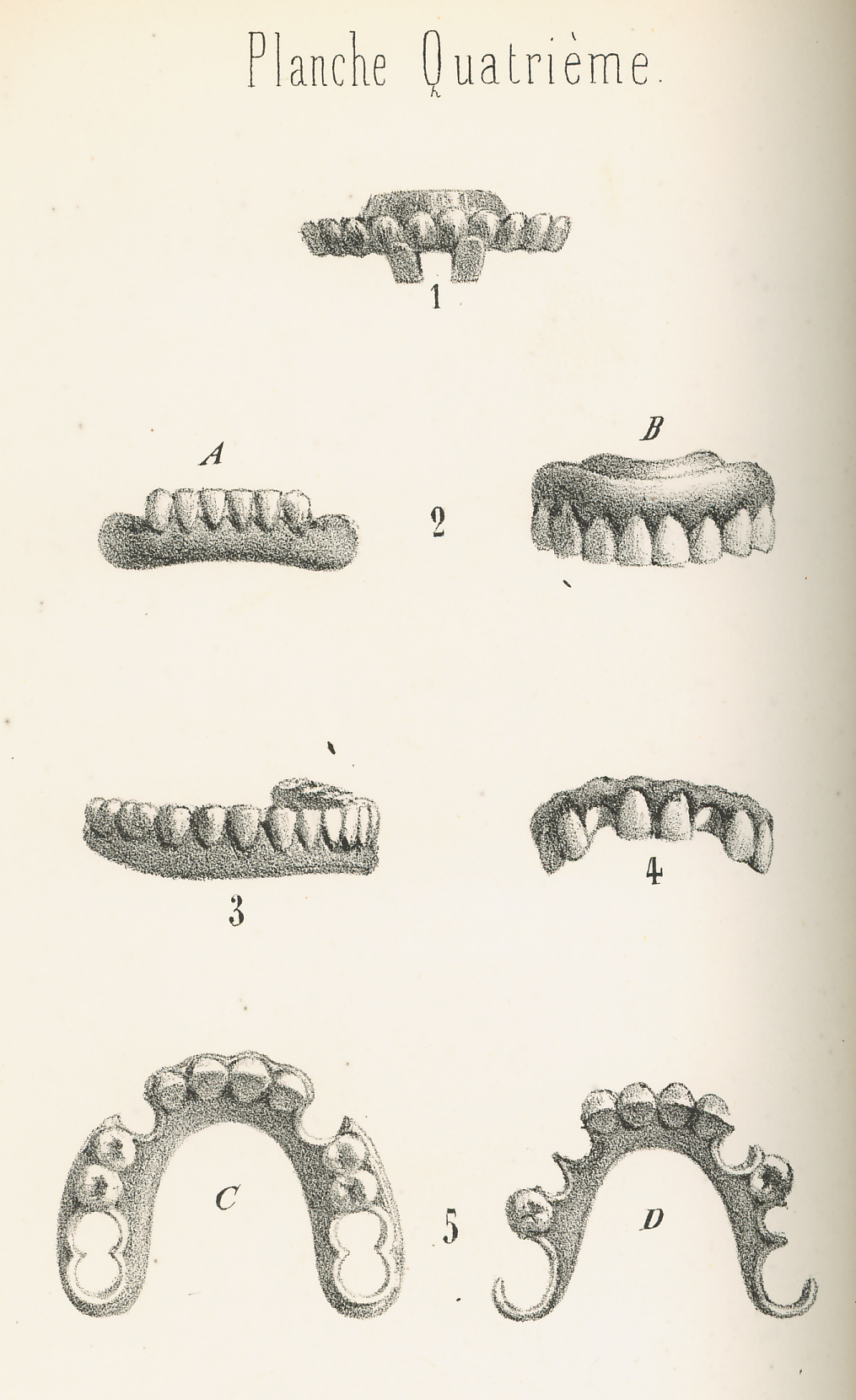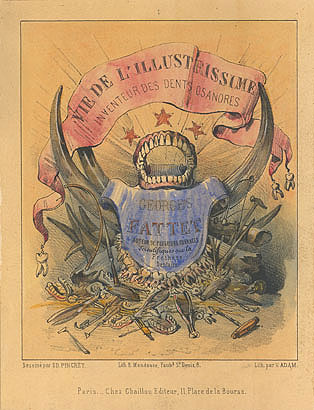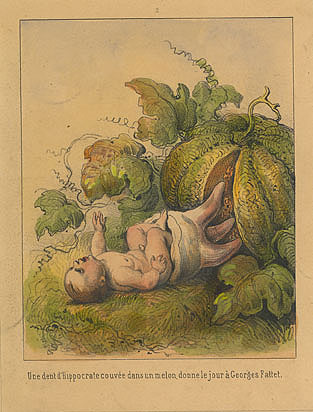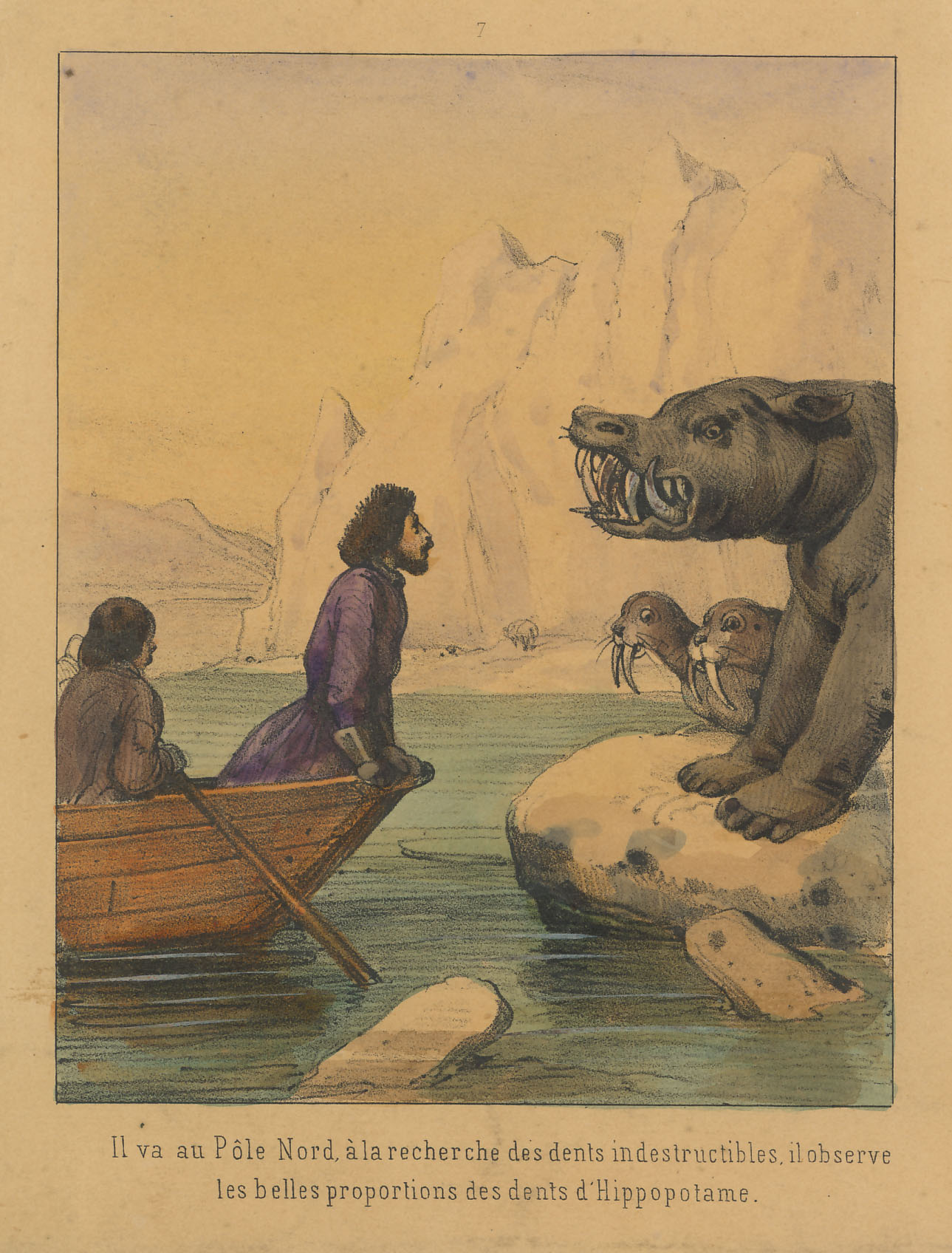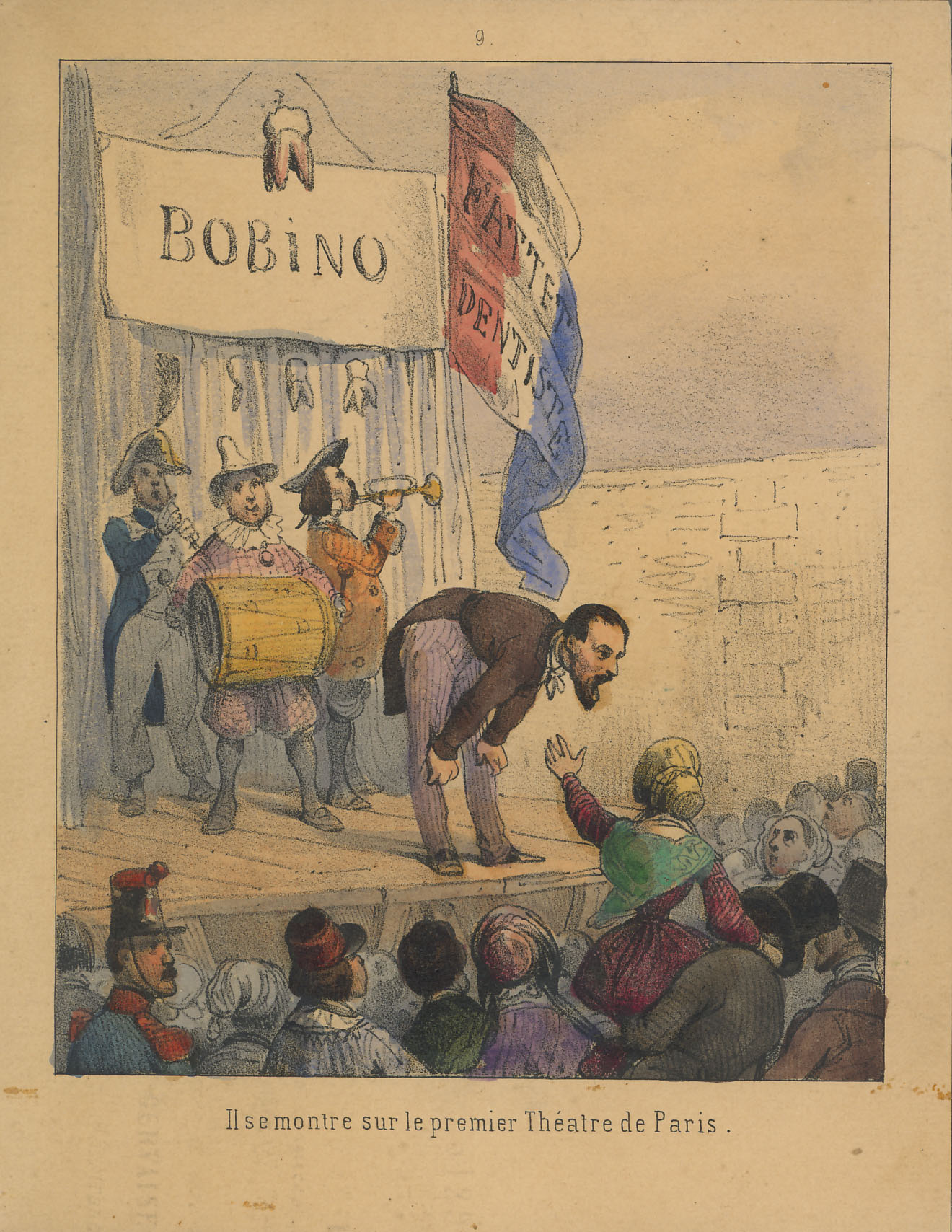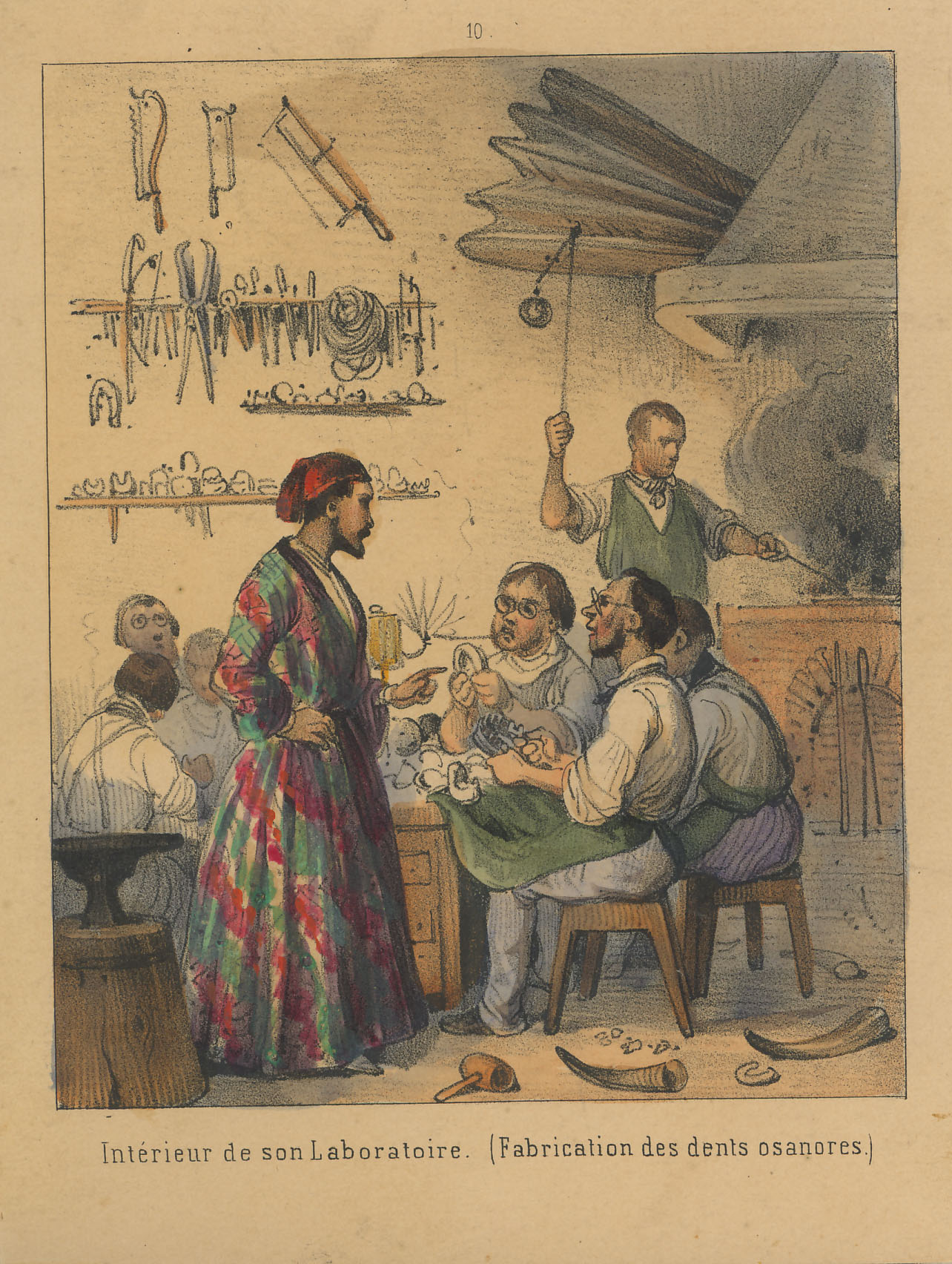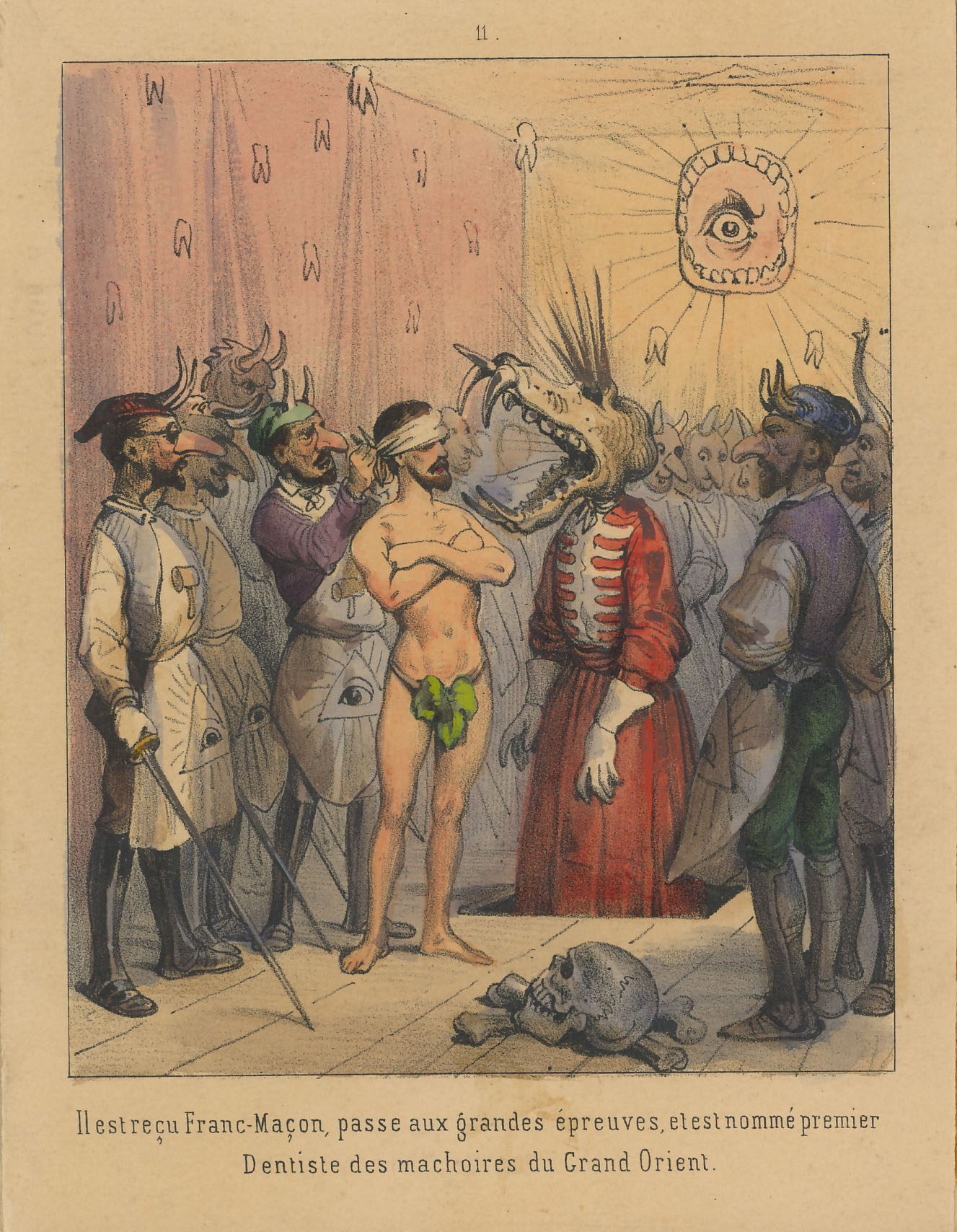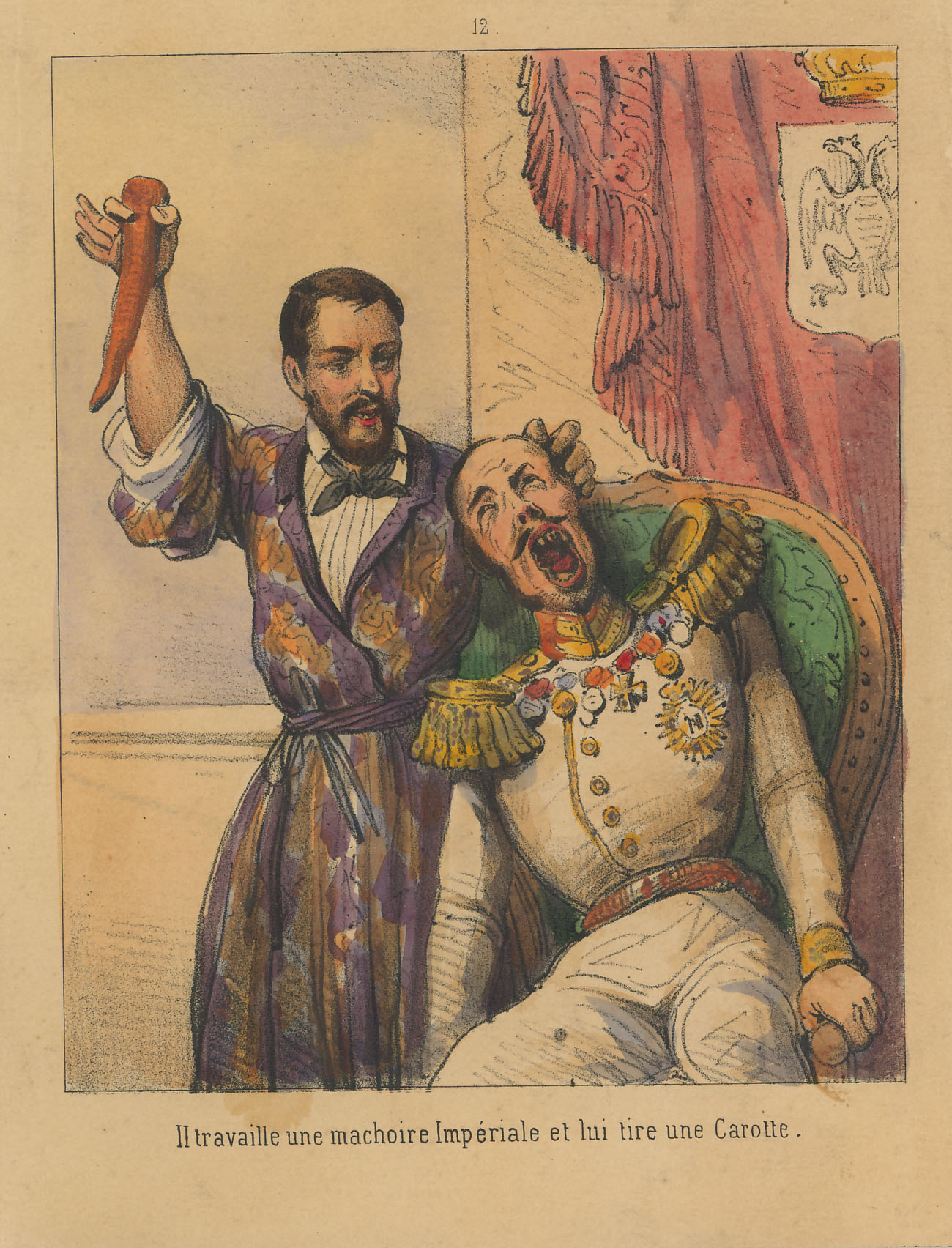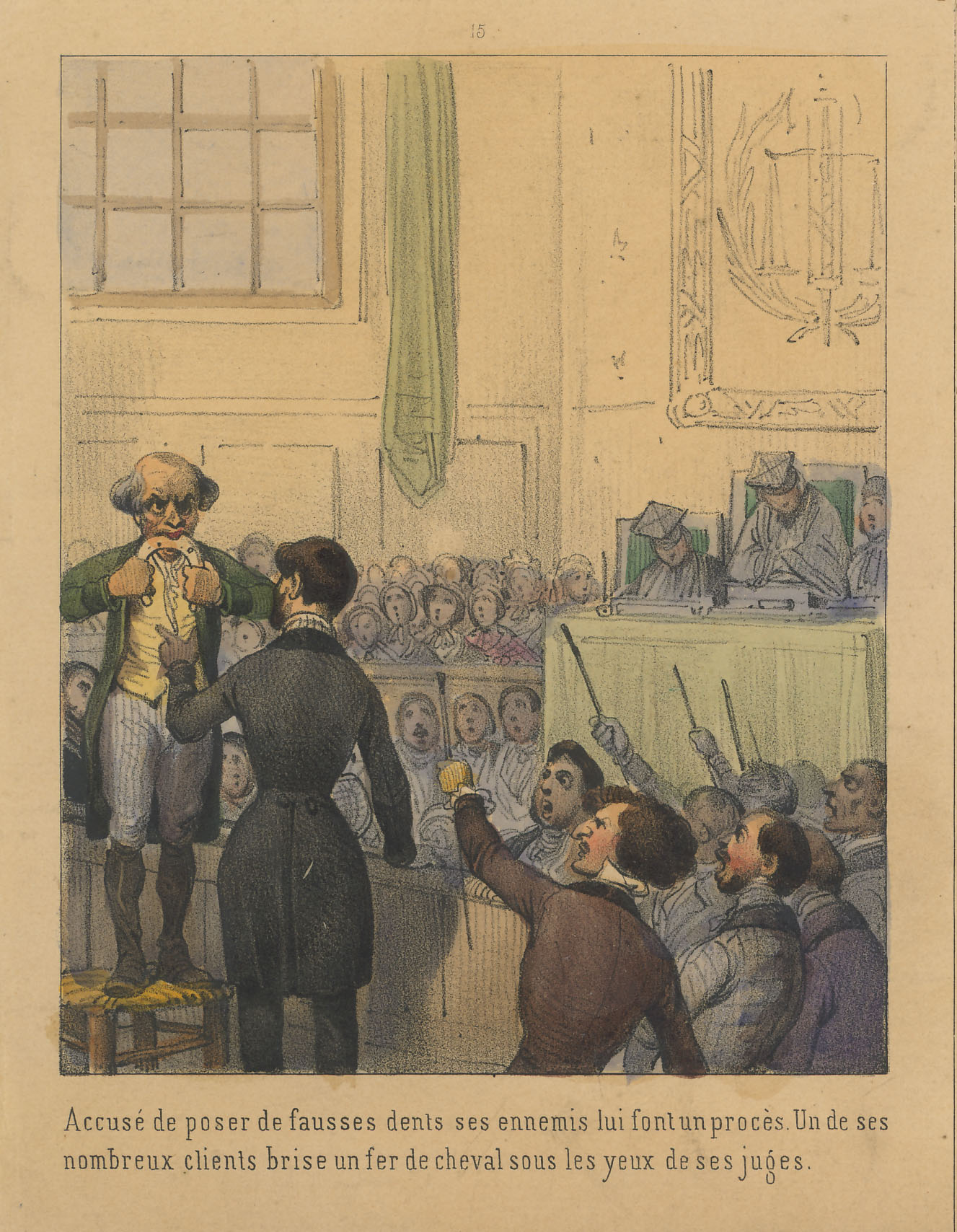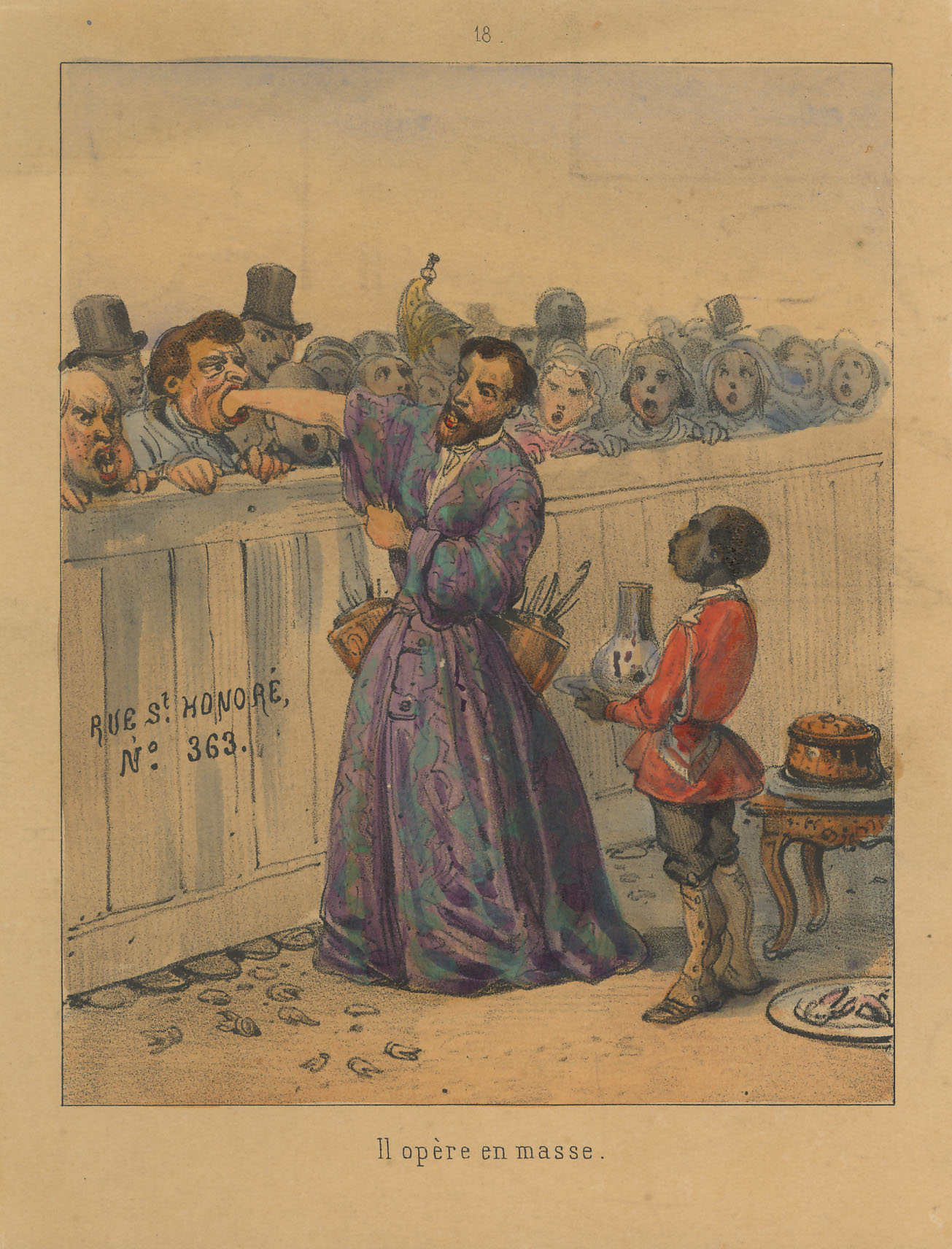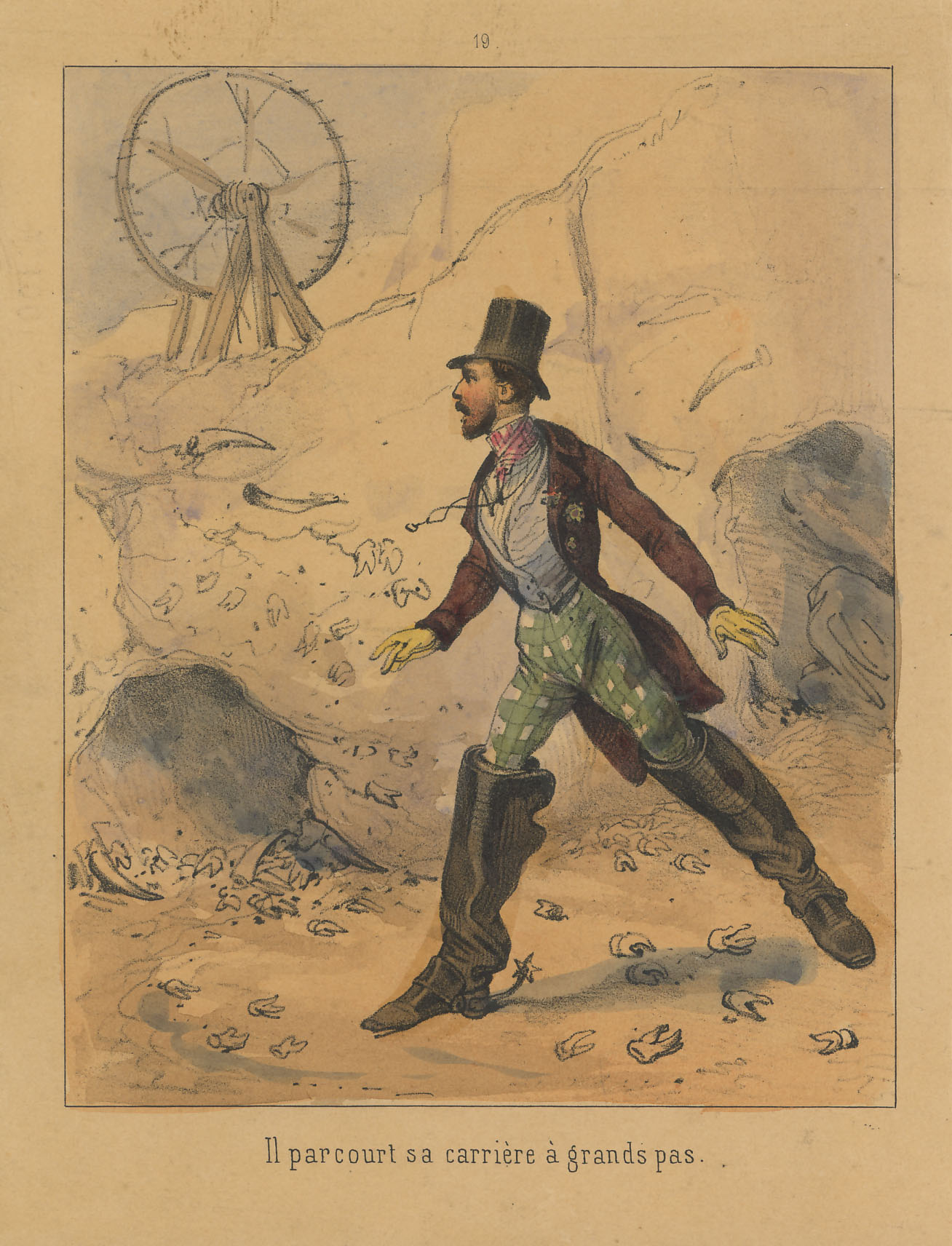Among the most extravagant and frequently caricatured of the unlicensed dentists was Georges Fattet. Born in 1820 in the provinces of France, and trained in dentistry through apprenticeships, Fattet went to Paris about 1840. There he quickly established himself in stylish offices and went on to have a flamboyant but meteoric career. During the following decade he attracted much attention with such things as the long brocaded dressing gown that he wore in his operatory and his retinue of black attendants dressed in formal morning coats. He also rode in a carriage shaped like a large set of false teeth. However, his successes were relatively short-lived. While he survived several contentious lawsuits, his career as a society dentist nevertheless seems to have ended abruptly and unceremoniously around the end of the 1840s. Fattet did not make any particularly notable contributions to the science of dentistry. Even the "Dents osanore" (false teeth) whose virtues he proclaimed to his patients were no different from those fabricated by other dentists. Rather, he was known in his own era as he is remembered today, as the most shameless of showmen and most audacious of self-promoters. He advertised widely in the Parisian press, and he published books on dentistry that were more promotional than instructional. But, for the most part, his persona was created by the art of caricature.
Parisian painters and caricaturists such as Edouard Pingret and Amedee Noe (known as CHAM) seemed to gravitate to Fattet as a natural subject for caricature. During his career, they produced a succession of such works that appeared first in the periodical press and reviews and even on the covers of sheet music, but which were sometimes also distributed separately as lithographs. Far from resenting these works, Fattet welcomed them for the publicity they gave his dental practice. Moreover, to advance his practice yet further, he deliberately commissioned still other caricatures.
Information contained in a booklet accompanying the exhibition of the oil painting at right in April of 1991 at the National Library of Medicine, Bethesda, Maryland.
Among the most extravagant and frequently caricatured of the unlicensed dentists was Georges Fattet. Born in 1820 in the provinces of France, and trained in dentistry through apprenticeships, Fattet went to Paris about 1840. There he quickly established himself in stylish offices and went on to have a flamboyant but meteoric career. During the following decade he attracted much attention with such things as the long brocaded dressing gown that he wore in his operatory and his retinue of black attendants dressed in formal morning coats. He also rode in a carriage shaped like a large set of false teeth. However, his successes were relatively short-lived. While he survived several contentious lawsuits, his career as a society dentist nevertheless seems to have ended abruptly and unceremoniously around the end of the 1840s. Fattet did not make any particularly notable contributions to the science of dentistry. Even the "Dents osanore" (false teeth) whose virtues he proclaimed to his patients were no different from those fabricated by other dentists. Rather, he was known in his own era as he is remembered today, as the most shameless of showmen and most audacious of self-promoters. He advertised widely in the Parisian press, and he published books on dentistry that were more promotional than instructional. But, for the most part, his persona was created by the art of caricature.
Parisian painters and caricaturists such as Edouard Pingret and Amedee Noe (known as CHAM) seemed to gravitate to Fattet as a natural subject for caricature. During his career, they produced a succession of such works that appeared first in the periodical press and reviews and even on the covers of sheet music, but which were sometimes also distributed separately as lithographs. Far from resenting these works, Fattet welcomed them for the publicity they gave his dental practice. Moreover, to advance his practice yet further, he deliberately commissioned still other caricatures.
Information contained in a booklet accompanying the exhibition of the oil painting at right in April of 1991 at the National Library of Medicine, Bethesda, Maryland.
